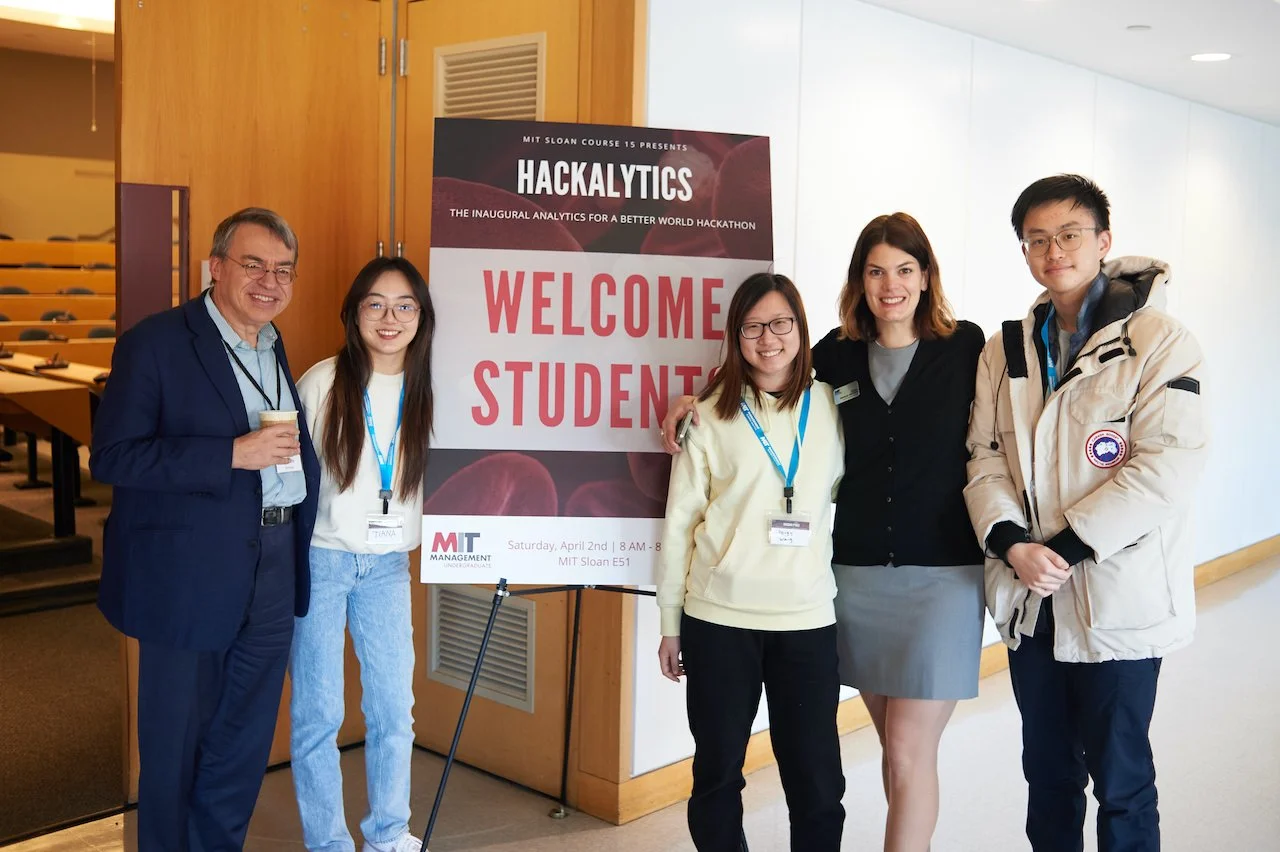Campus Spotlight: How MIT Sloan used CampusGroups to Host a Hackathon
/In early April 2022, MIT Sloan School of Management (MIT Sloan Undergraduate Education) used the CampusGroups (CG) platform to hold an Analytics Hackathon. The “Hackalytics” event was the program’s first “Analytics for a Better World” Hackathon.
The event was co-hosted by the MIT Sloan Master in Business Analytics (MBAn) and MIT Sloan Undergraduate programs. It was designed to give undergraduate students exposure to data analytics, with the support of Business Analytics graduates and post-docs from MBAn. It also sought to demonstrate how analytics can contribute to the welfare of society.
The event was centered around the “Good Health and Wellbeing” United Nations Sustainable Development Goal. Specifically, students were given multiple data sets to analyze and predict the risk of a person developing Type II Diabetes.
With over 60 participants, the Hackathon was a resounding success and is slated to happen annually. To learn more about the event, I had the pleasure of speaking to the team that made it all happen. Based on this discussion, I will highlight how MIT Sloan used the CG platform to plan and hold the Hackathon.
How the CG Platform was Used to Plan the Event
The Hackalytics event was three years in the making. Planning started in 2019 but was put on hold due to the Covid 19 pandemic. The Associate Dean for Business Analytics at MIT Sloan, Dimitris Bertsimas, didn’t want to do things virtually. Therefore, planning resumed in the fall of 2021, once in-person events started to happen again.
The first step in the process was to find a platform to support the logistics and execution of the event. According to Natalie Petit, Associate Director of Undergraduate Education, “we wanted a single platform (available on the web and mobile) to:
1. Track attendance
2. Provide data securely
3. Enable students to upload results
4. Enable judges to download results
5. Declare a winner”
The CG platform met all these requirements. The fact that it was already implemented at MIT Sloan as “Sloan Groups”, was an added benefit. Other key features included the ability to “send out dedicated communications to specific groups by creating different privacy settings” , said Karyn E. Glemaud-Anis, Assistant Director of Undergraduate Programs, who oversaw event communications and marketing.
“A new world opened to me when I learned that CG could be used to run a Hackathon.”
“We wanted the event to be open to all 4,000 plus undergraduate students, not just Business Analytics majors,” said Natalie, who helped organize the Hackathon. Therefore, the ability to easily create email templates, send out blast communications and notifications was critical. “A new world opened to me when I learned that CG could be used to run a Hackathon”, she added.
How the CG Platform was Used During the Event
The Hackathon was held at MIT Sloan, where an entire floor was reserved for the event. Students were able to self-check in with the mobile app using the QR code. The students were then provided with their challenge in one room and had access to the system from 9am-5pm.
“Using Sloan Groups for the Hackathon was amazing. With everything in one place, the platform streamlined everything and exceeded our expectations.”
All material related to the Hackathon was provided via CG. The organizing team used the CG Group feed to provide the link to the folder containing the instructions and all the datasets.
Students, who were able to disperse and work in small groups, received reminders and updates (for instance when lunch was ready) through the Group feed. They were also able to share documents within their groups.
Upon completing their analysis, participants uploaded their results to the platform via the survey feature. There was also a specific folder for students to provide their final documents.
Once all responses were submitted, judges were able to review the answers in one place and nominate winners! Prizes for the top teams included iPads, Apple watches, and paid summer Undergraduate Research Opportunities Programs (UROP).
“Using Sloan Groups for the Hackathon was amazing. With everything in one place, the platform streamlined everything and exceeded our expectations”, said Giada L. Tridello-Mattern (Assistant Director, MBAn Program Office) who helped organize the Hackathon and regularly uses CG to track graduate events.
“It went so well that we are going to do it on an annual basis,” said Karyn. “I love that after the initial setup you can reuse the same framework for future events” she added. In addition to next year’s Hackathon, the team plans to use CG for other upcoming events.
RELATED ARTICLES:
















